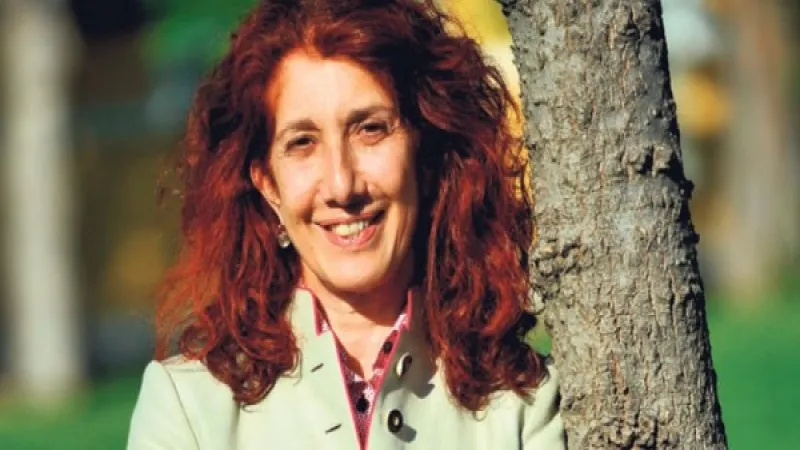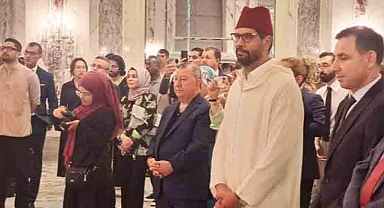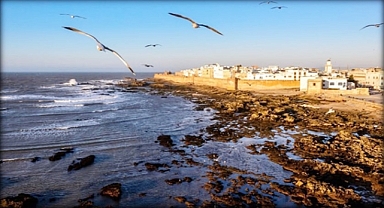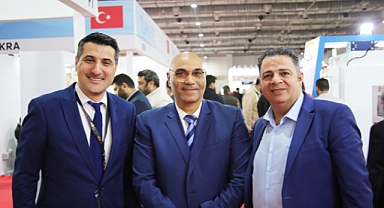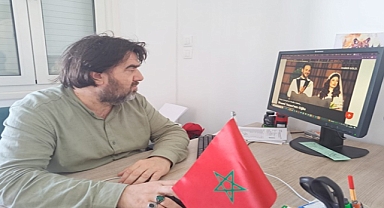Inconsistency between Islam and modernity is growing. The distinction between geography and history is being eroded.
In a book published in English in 2010 -- "Islam in Europe: The Lure of Fundamentalism and the Allure of Cosmopolitanism” – Professor Nilüfer Göle showed by reliance on the notion of "interpenetrations” between beliefs and cultures that counter-readings and analyses are necessary.
Göle’s approach is, of course, a hard road to travel. It requires empathy with different worlds of meaning. But there is a synchronic relationship between Islam and modernity, from a proximate perspective. In order to better understand the process of mutual engagement or "interpenetration,” it is necessary to perform a multilayered reading and see the manifestations of synchronization. Merely taking a look is not sufficient.
We observe unexpected encounters in the social world. We also observe the harmonization of phenomena that seem to be irreconcilable. We need theory, depiction and analysis in this era of interpenetrations and encounters; otherwise abstract, absolute and purely discursive ideas remain unsupported.
Göle is in search of a comprehensive analysis of these tough and complicated processes. In an interview with Sunday’s Zaman, she offered an insight on her interpretations.
According to the renowned professor, violent protests sparked by an anti-Islam movie, the "Innocence of Muslims,” is another example of the interpenetration between the Western world and Islam. While violence is justified in the course of protests in the Muslim world, in the West, the concept of freedom of thought has become the justification for symbolic violence.
Excerpts from the interview with Göle are as follows:
Compared to the Islam we observed in the 1990s in Turkey, does the Islam we observe in Europe make you feel "déjà vu”? Or is the tension between the secular and the religious stronger?
What happened in Europe with reference to Islam could be considered déjà vu, a previously staged film scenario, if you look at it from Turkey’s perspective. The discussions on headscarves and the republic are similar to the discussions that have taken place in France over the past two decades. There is also similarity between terminologies. However, a "European Islam” is also emerging. The place of Islam in the lives of Muslims and its manifestations display many European characteristics. From Turkey’s perspective, all Muslims may look the same. Compared to Europe, the way the people experience Islam in Turkey appears to be homogenous in terms of language and nationality.
Secondly, despite the current and historical dynamics of secularization, Islam is experienced in a natural style in Turkey. On the other hand, matters that we do not see as problems in Turkey have become sources of controversy in Europe, including the minarets of the mosques, halal meat and even the cultural and political discussions on circumcision. Islam in Europe does not refer to the natural course of a river shaped by traditions and religious rituals over centuries. As migrants expend efforts to make a new home and become familiar with a new environment, Islam is also settling in a new cultural basin and geography.
Thirdly, in European Islam the linkage between nationality and religion is weakening. It is disappearing with the new generations. Muslims get new citizenship in different nations of Europe and create a distinctive minority and community shaped by different ethnic origins and historical courses. Their Muslim identity serves as an umbrella, bonding them together. In short, the climate in which Muslims practice their faith in Europe is extremely different. Moroccan, Turkish, Algerian and Pakistani Muslims explore their various prayer practices and cultural customs in the same continent, and sometimes in the same neighborhoods. Whether they use the same mosques, the language in which the sermons are delivered, to whom their daughters get married and other social questions become part of the daily lives of Muslims.
Many Europeans discover the differences among Muslims and therefore experience the cosmopolitan Islam. In conclusion, new questions peculiar to European Islam or Muslims in Europe emerge. While it is still influential over Muslims, Middle Eastern Islam is no longer the dominant form. There are now many new Islamic thinkers, scholars and theologians who raise these issues and are able to understand the demands of European Muslims.
It has been assumed that the two identities, modern and Muslim, were distinct. However, they are transforming in the process of interpenetration, as you define it, in the micro-power relationship. This process is pretty painful for both sides. What are the advantages and benefits of this process?
In our focus on the clash between Europe and Islam today, we need to take a look at religion in the subjective life of Muslims and understand the tensions in their inner worlds and how they question life. The interaction and penetration between the secular and the religious is part of the daily lives of Muslims. We cannot take Islam as an unchangeable category. We cannot reduce it to the religion section on our ID cards. Muslims are trying to experience Islam and traditions in Europe in an environment where their comfort, based on the usual rituals, is disturbed. We are talking about an Islam that is less natural, taking place in front of the non-Muslim majority and gaining new meanings. As Muslims settle in Europe and practice their religion more eagerly, they make Islam more apparent in the public sphere and, knowingly or unknowingly, they violate some rules.
The clash is taking place mutually. Muslims make their identity visible and religious and cultural diversities appear by pushing the limits. They take part in the secular life, where their religious symbols are not desired. However, in this process, symbols of religiosity and prayer take on new meanings. Europeans, on the other hand, rely on additional legislation to deal with these violations and restrict the limits of the public sphere, i.e., restrict the democracy. In the end, I believe that they restrict the potential of the public sphere by legal and legislative means.
Some analysts present Islamism as an opponent to Western modernity as if it were a social remedy to all problems, like socialism. In this system, they also refer to inconsistency between Islam and modernity, and the secularists do the same. Could we talk about the pragmatism of dual readings? Can we think of Islam as a given phenomenon in terms of its social manifestations?
The linkage between the narrative of modernity and secularism has been extensively questioned. In addition, the courses of secularism manifested outside the West have been noticed. Today, the secularism discussions are enriched by the pluralist secularism in India and the anti-colonialist pacifist Gandhi resistance. The comments on Islamic secularism are also included in these discussions. For this reason, the dualist readings, like Western secular modernity and the rest, are no longer valid. They only represent intellectual laziness or breed ideologies. Today, we cannot speak of single-centered modernity, and we also observe the weakness of the narrative of hegemonic secular modernity. The narratives requiring choice between this and that ignore the interactions and interpenetrations between the secular and the religious.
You believe that progress towards unique difference depends on encounter, inclusion, penetration and permeation. Instead of external transformation and inspection of theories from a distance, you are in search of analyzing things from within. How do you respond to those who see your depictions or analyses as integration or joining with the modern?
Transcending the modern, relying on a golden age of the past or an idealized future, the desire to change the present -- all alternative movements want to achieve these. However, the course of social life does not overlap with people’s ideals. What I am trying to depict and what I analyze is the tension between these ideals and the praxis, the betrayals, the destructions and the unexpected outcomes. Islam has entered the turbulence of modern times; and it has even become the subject of this turbulence.
For some, submission to modernity refers to indifference to religion; for some, it means consolidation of religion and its promotion through the power of authority and money. Some Muslims spoil themselves with the attractions of the modern world, but even those who do this do not only integrate or articulate themselves with the modern but also open up modernity to different cultural basins by offering goods for consumption, places, spaces and fashions to religious people. I could formulate the question that is embedded in my studies and works as follows: Could a critical stance or faith create a modern world that is not defeated by market rules and power relations, without becoming corrupted by modern times and seduced by its appealing offers? In my all analyses and depictions, I question the creative, transformative potential and power as well as its ability to raise the standards of civilization.
Some violent protests were staged in response to a provocative anti-Islam film, "Innocence of Muslims.” The American envoy to Libya was killed. Some protestors were shot by the police. Will hatred against Muslims become determinative in the future of Islam and of Europe? What are your observations and intuitions on this matter? The cartoons in Denmark and now this movie -- do you see any correlation between these incidents? Do we see the same film all the time?
This is another example of the interpenetration between the Western world and Islam, of the violence that this proximity has created and of the violation of the boundaries. There is a film seeking to violate the sanctity of a religion, and there is also a state of violence that violates the sanctity of human life. The clash has spread from Europe to the US. There is a past in this matter: discussions over a ground zero mosque, the attempt by a pastor in Florida to burn the Quran, a referendum campaign to ban sharia in American states to protect against fictive sharia demands and offensive references to Obama’s middle name. All these are examples suggesting that opposition to Islam has been spread in the US as well.
As it leaves the interpenetration with Islam and the test of coexistence for the monopoly of enemies of Islam, the Western world is getting away from rationality and aesthetic criteria. The notion of Islamophobia reflects this and speaks to the most basic and most primitive world of emotions and fears of a mankind deprived of rationality. All agree that this recent film is provocative and holds vicious intentions. But people also ask this question: Why is the Islamic world unable to ignore this provocation? Why are they so angry, and why do they express their emotions so primitively and violently?
Neither of these two distinct reactions can be entirely attributed to the Western world or Islam and the Muslims. But these reactions present the pathological symptoms of the encounter between these two worlds. The film uses the freedom of expression as a tool, and against it violence is justified by the sanctity of the religion. The Islamic world condemns violence -- yet it ignores the presence of violence and the barbarity in this state of violence. Some minority movements, like salafi jihadists, who are not considered a proper representative of Islam, try to take the Arab Spring under their control and intimidate their fellow citizens by resorting to violence.
On the other hand, the concept of freedom of thought has become the justification for symbolic violence. The Western world has to redefine the principle of freedom of thought and make sure that it is not used as part of its hegemonic domination. But this is not easy, because the prerequisites of freedom of thought, the scientific and aesthetic criteria, have been eroded. It is possible to express every view, say everything in social media. The people prefer visual, simple explanations rather than stimulating ideas. The value of freedom of thought is not the ability to say everything; freedom of thought can offer results in an environment where knowledge and aesthetic criteria are preserved. Only then can it raise the bar for civilization.
In short, in order to make sure that the encounter between Islam and the Western world moves forward down a violence-free path, they have to rely on a new style of communication, interaction and penetration when they violate the boundaries, meet each other’s sacred symbols and values and test the tolerance threshold. I believe that Muslims cannot contribute to this process by trying to adapt to modern politics. Some traditional values and principles referring to the wisdom of remaining silent may offer a new style in politics. The activism of modern politics and its supremacy, which transforms freedom into arrogance, as well as its reactionary style, provoke further clashes and conflicts.
World
Yayınlanma: 03 March 2022 - 05:27
Update: 15 June 2023 - 21:11
Freedom of thought has become a shield for symbolic violence'
Inconsistency between Islam and modernity is growing. The distinction between geography and history is being eroded.
World
03 March 2022 - 05:27
Update: 15 June 2023 - 21:11
This news 379 hits received.
These news may also interest you

